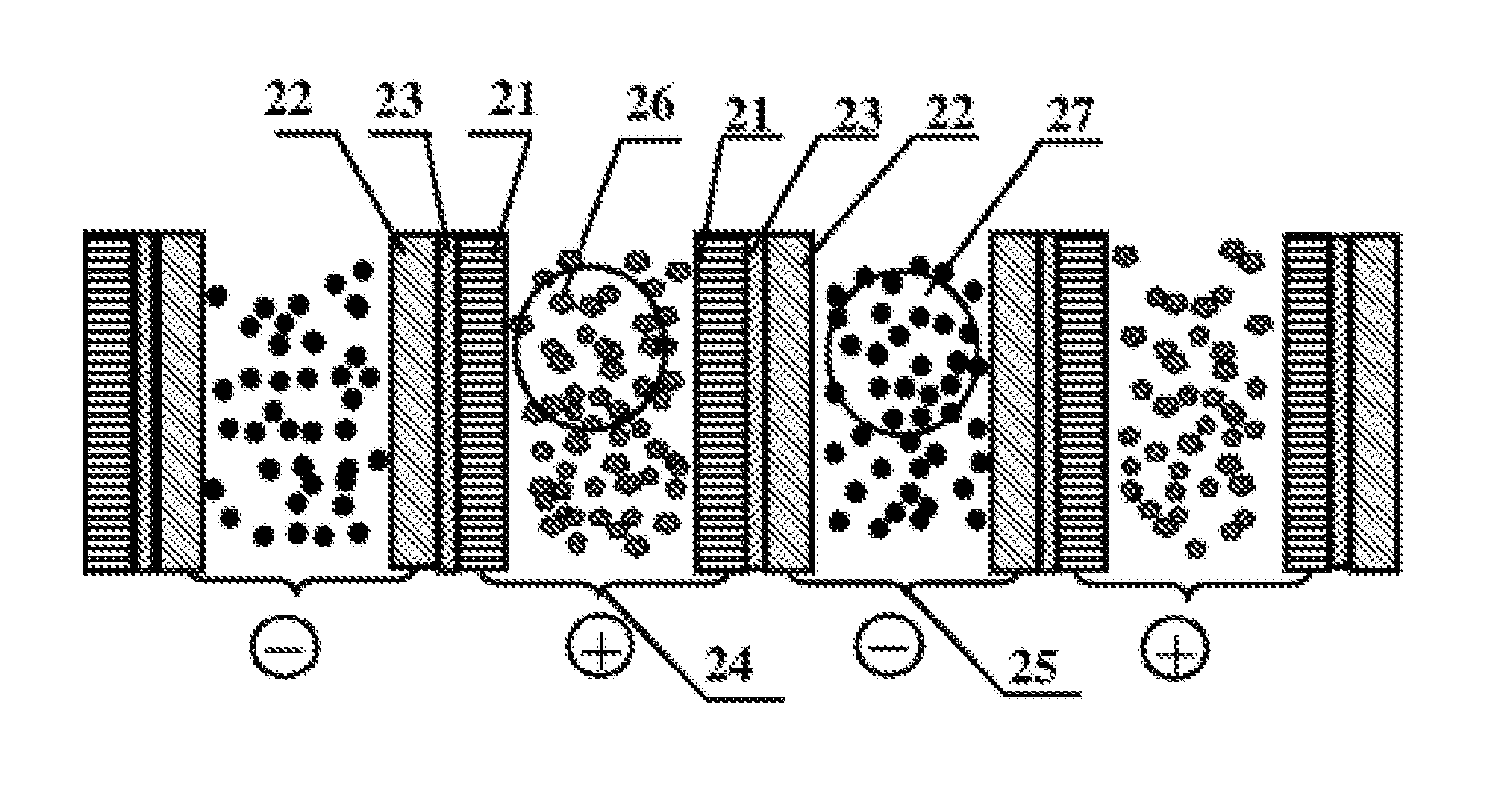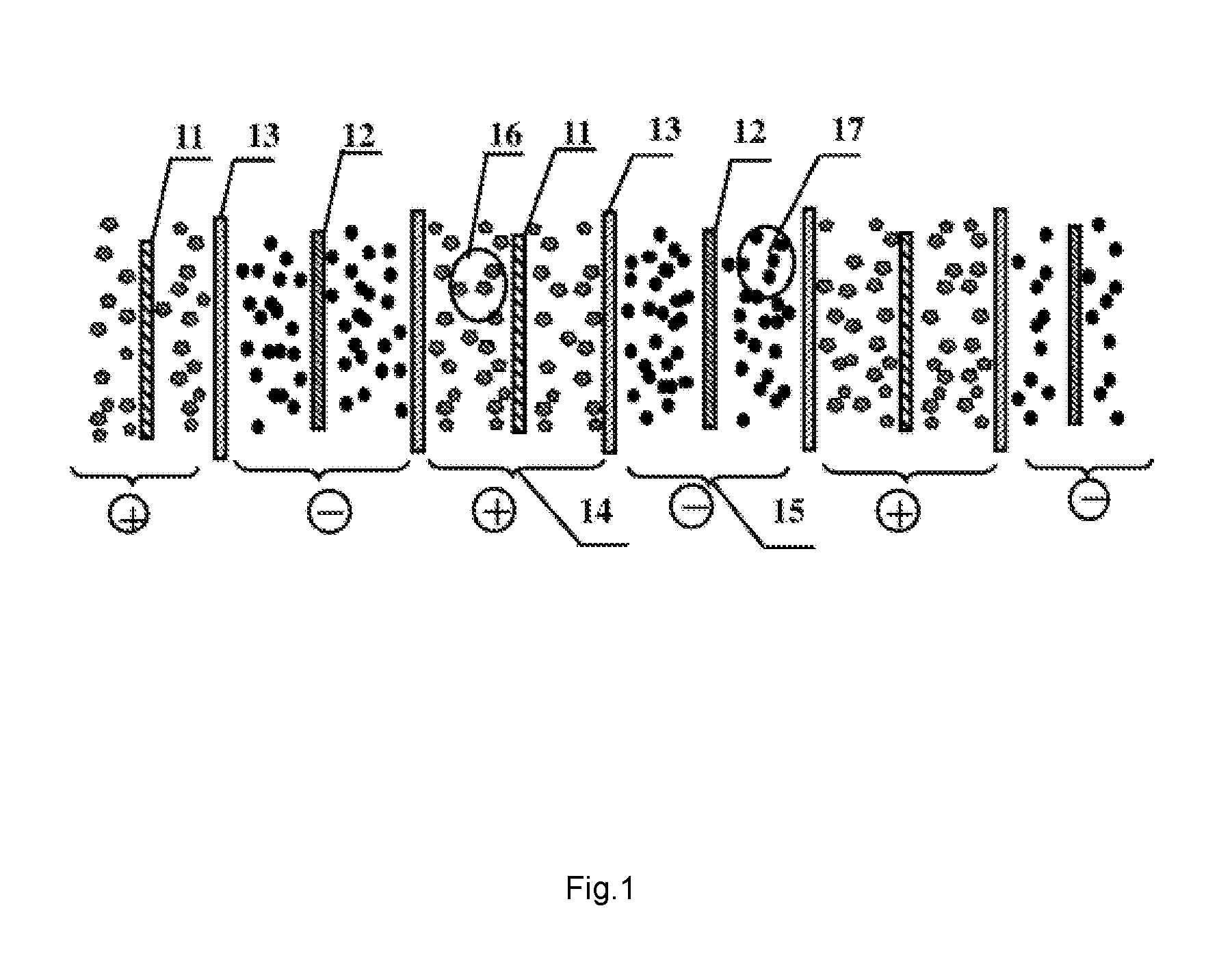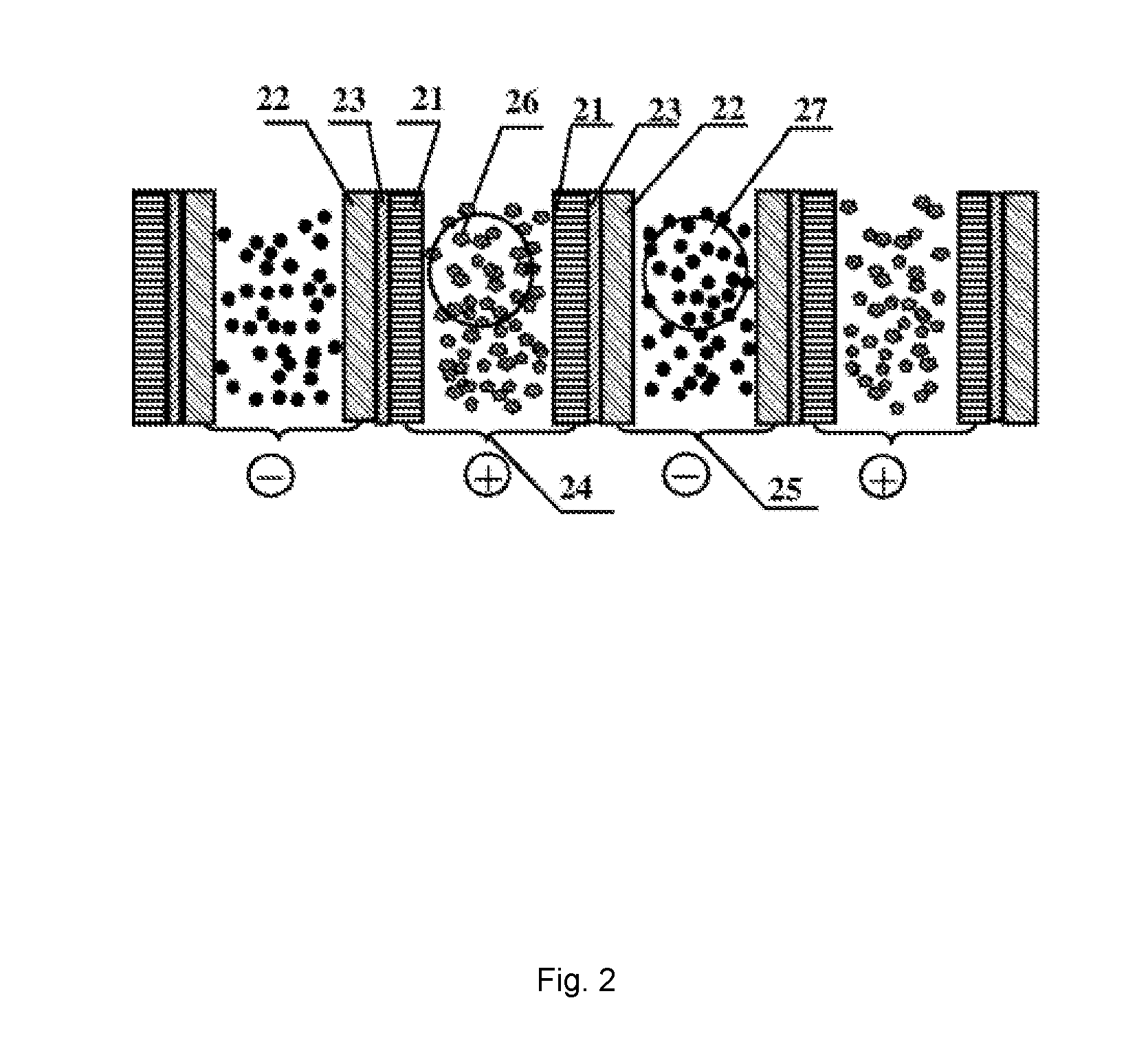A novel lithium ion flow battery
a lithium ion flow and lithium ion technology, applied in the direction of indirect fuel cells, cell components, cell component details, etc., can solve the problems of increasing the internal resistance of the battery, and affecting the flow of the electrode suspension solution, so as to reduce the requirement for electronic conductivity, improve the effect of current collection and electrical conduction, and reduce the amount of conductive additives
- Summary
- Abstract
- Description
- Claims
- Application Information
AI Technical Summary
Benefits of technology
Problems solved by technology
Method used
Image
Examples
example 1
[0041]This example provides sandwich composite structure layers of the lithium ion flow battery.
[0042]The structure of reaction chamber of the lithium ion flow battery is shown in FIG. 2. In the example, a PP / PE / PP porous composite film is used as an separator 23. The separator 23 is spray-coated at both surface thereof with a cathode current collector 21 and an anode current collector 22, respectively. The cathode current collector 21 is a conductive coating formed of a mixture of carbon nanotube with a mass percent of 90% and polyvinylidene fluoride, and has a thickness of 20 μm. The anode current collector 22 is a conductive coating formed of a mixture of carbon fiber with content of 90% and polyvinylidene fluoride, and has a thickness of 20 μm.
[0043]Further, two adjacent cathode current collectors 21 in which contained a cathode suspension solution 26 form a cathode reaction chamber 24. In the example, the distance between the two adjacent cathode current collectors 21 forming t...
example 2
[0045]This example provides another sandwich composite structure layers of the lithium ion flow battery, in which the lithium ion flow battery has a structure similar to that in example 1, by reference to the schematic structural view of FIG. 2.
[0046]In the example, a conductive polymer electrolyte film, which is a composite gel polymer electrolytes compounded by three parts of polymer matrix, liquid organic plasticizer and lithium salt, is selected as a separator. Porous carbon fiber conductive cloth is selected as both the cathode current collector having a thickness of 900 μm and the anode current collector having the same thickness of 900 μm. Sandwich composite structure layers are constituted by bonding the cathode current collector, the separator and the anode current collector.
[0047]In the example, the width of the cathode reaction chamber 24 is 5 mm and the width of the anode reaction chamber 25 is 5 mm.
example 3
[0048]This example provides another sandwich composite structure layers of lithium ion flow battery which has a structure similar to examples 1 and 2, by reference to the schematic structural view of FIG. 2.
[0049]In the example, a bilayer-structured PE porous film is selected as a separator.
[0050]The cathode current collector is a composite structure of porous aluminum foil and porous conductive coatings, and has a thickness of 0.08 mm, wherein the aluminum foil has a thickness of 0.05 mm and the meshes of the aluminum foil are in quadrate shape with a pore diameter of 0.5 mm and through-hole porosity of 60%. The anode current collector is a composite structure of porous copper foil and porous conductive coatings, and has a thickness of 0.08 mm, wherein the copper foil has a thickness of 0.05 mm and the meshes of the copper foil are in circular shape with a pore diameter of 0.5 mm and through-hole porosity of 60%.
[0051]Further, the porous conductive coating is a mixture of carbon po...
PUM
| Property | Measurement | Unit |
|---|---|---|
| distance | aaaaa | aaaaa |
| distance | aaaaa | aaaaa |
| pore diameter | aaaaa | aaaaa |
Abstract
Description
Claims
Application Information
 Login to View More
Login to View More - R&D
- Intellectual Property
- Life Sciences
- Materials
- Tech Scout
- Unparalleled Data Quality
- Higher Quality Content
- 60% Fewer Hallucinations
Browse by: Latest US Patents, China's latest patents, Technical Efficacy Thesaurus, Application Domain, Technology Topic, Popular Technical Reports.
© 2025 PatSnap. All rights reserved.Legal|Privacy policy|Modern Slavery Act Transparency Statement|Sitemap|About US| Contact US: help@patsnap.com



